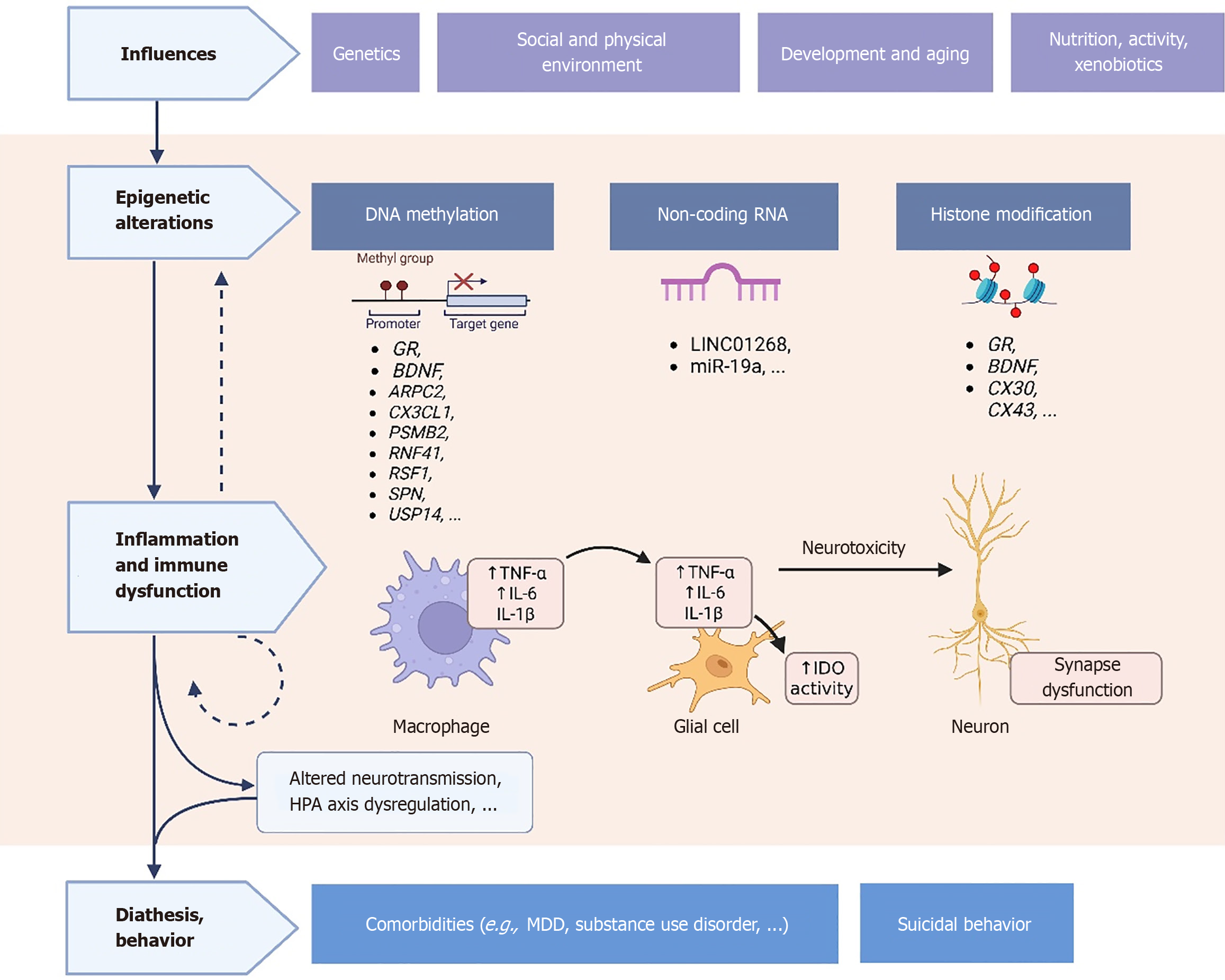Copyright
©The Author(s) 2025.
World J Psychiatry. Sep 19, 2025; 15(9): 107726
Published online Sep 19, 2025. doi: 10.5498/wjp.v15.i9.107726
Published online Sep 19, 2025. doi: 10.5498/wjp.v15.i9.107726
Figure 2 Schematic diagram: Interactions between epigenetics and the immune system in suicidality.
This conceptual diagram, based on the synthesis of current literature, illustrates how various exogenous and endogenous factors influence the epigenetic state that contributes to suicide diathesis and suicidality itself. Epigenetic mechanisms regulate the expression of genes that are directly or, more commonly, indirectly involved in the immunity of peripheral and central tissues, which can also communicate with one another (e.g., macrophage - glial cell interactions). As represented by the figure below the “DNA methylation” box, DNA methylation in promoter regions is associated with the repression of transcription. Genes and RNAs listed below the three epigenetic mechanisms (DNA methylation, non-coding RNAs and histone modifications) have been implicated in various methodologically different studies, including those with epigenome-wide approaches. In suicidality, epigenetic alterations may promote glial dysfunction and cytokine dysregulation, which has wide-reaching effects, impacting neuron function, neurotransmission and hypothalamic-pituitary-adrenal axis. Inflammatory processes may exacerbate each other (represented by the dashed circle) and contribute to the biological correlate of suicide diathesis, promoting the development of psychiatric disorders and influencing behavior. As represented by the dashed line, the immune system can also affect epigenetics, providing potential for both regulation and exacerbation. GR: Glucocorticoid receptor; BDNF: Brain-derived neurotrophic factor; ARPC2: Actin-related protein 2/3 complex subunit 2; CX3CL1: Chemokine (C-X3-C motif) ligand 1; PSMB2: Proteasome 20S subunit beta 2; RNF41: Ring finger protein 41; SPN: Sialophorin; USP14: Ubiquitin specific peptidase 14; IL: Interleukin; TNF-α: Tumor necrosis factor alpha; IDO: Indoleamine 2:3-dioxygenase; CX30: Connexin 30; CX43: Connexin 43; HPA: Hypothalamic-pituitary-adrenal; MDD: Major depressive disorder. Created in BioRender. Šmon J. (2025) https://BioRender.com/bdjmxj3.
- Citation: Kouter K, Šmon J, Videtič Paska A. Epigenetics and immunology: Under-recognized aspects of suicidality. World J Psychiatry 2025; 15(9): 107726
- URL: https://www.wjgnet.com/2220-3206/full/v15/i9/107726.htm
- DOI: https://dx.doi.org/10.5498/wjp.v15.i9.107726









